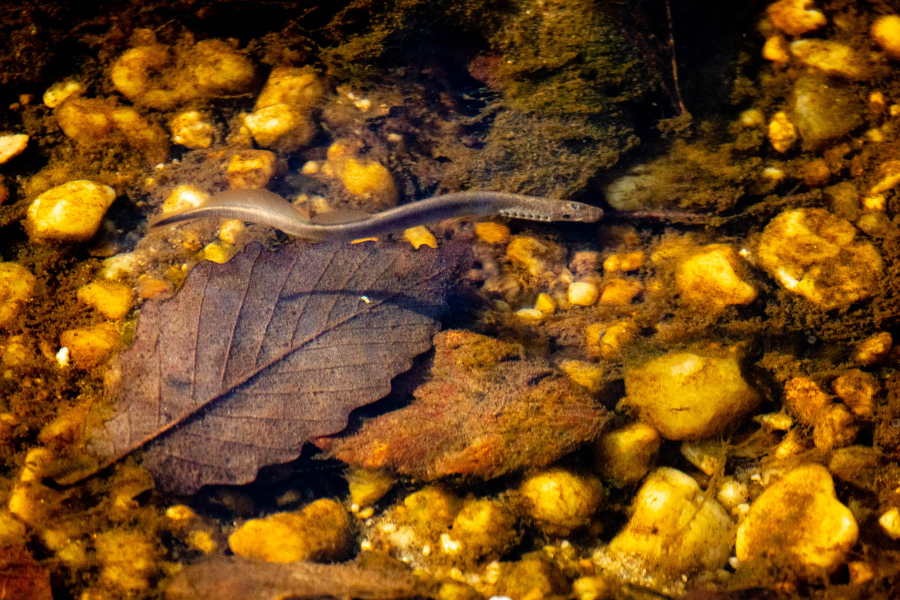Lampreys in the Bay—vicious parasite or a welcome wonder?

The American brook lamprey is no stranger to mistaken identity. Without a jaw, scales or paired fin, it could easily be mistaken for an eel or type of water snake. But one critter you don’t want to mistake it for is its more notorious relative: the parasitic, blood-sucking sea lamprey.
Though similar in appearance, brook lampreys and sea lampreys have very different behaviors. Brook lampreys are freshwater fish that spend their entire life in freshwater rivers like those in the Bay watershed. Their larvae feed on organic matter and microscopic plants and animals by burying themselves in the sandy bottoms of rivers and creeks and letting the current bring them food. After transforming into adults, brook lampreys stop feeding entirely.
The sea lamprey, on the other hand, have a different way of doing things. This species will spawn in the Bay’s freshwater rivers and partake in the same filter-feeding habits as young brook lamprey. However, after about 4-5 years, they undergo a metamorphosis in which they became adults and adopt a hematophagy (blood-sucking) feeding stye.
Adult sea lampreys leave freshwater rivers and live the rest of their life in the ocean, where they feed on a variety of fish and marine mammals. They use their suction cup mouth to attach themselves to fish, dig their sharp teeth into the flesh and then feed on the fish’s blood and tissue. Out in the ocean, this doesn’t pose too much of a threat to the ecosystem. The critter has a number of predators and other fish have evolved to be able to survive the attacks.
However, adult sea lampreys will eventually return to the Bay to lay eggs in fresh water, and can cause more harm to local marine life. Currently, the number of sea lampreys visiting Bay waters isn’t high enough to consider them a serious threat to fisheries, but there is always the potential for them to be. Outside the Bay watershed, in the Great Lakes, sea lampreys were introduced into the area and have been devastating to the ecosystem.
You can tell the difference between the two species of lamprey by catching them and looking at their mouths. If it resembles something out of a horror film, filled with rows of pointed teeth, then it’s a sea lamprey. Another (safer) way to tell is by the size. Brook lampreys are no longer than 14 inches, but sea lampreys can get up to three feet. There are also other lampreys that visit the Bay, such as the least brook lamprey. And a smaller lamprey could very well be a young sea lamprey that hasn’t yet taken on its blood sucking ways.
If you see any kind of lamprey, then that probably means the river or stream is healthy. Due to their sensitivity to contaminants and sedimentation, lamprey are good indicators of water quality.

Comments
There are no comments.
Thank you!
Your comment has been received. Before it can be published, the comment will be reviewed by our team to ensure it adheres with our rules of engagement.
Back to recent stories